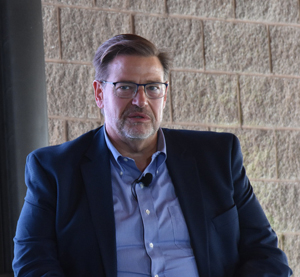A recently developed pricing model is making its way into the seed industry, and one company is hoping it will be another tool for farmers to offset financial risk at a time when weather, trade, and commodity price uncertainty are plaguing the market.
Bayer Crop Science is continuing a 2019 pilot program again this year on outcome-based pricing. The model bases prices for the company's products on a perceived value of how they performed during the growing season. It's a more fluid pricing structure than traditional models, which have based prices on overhead costs necessary to make and market the products.
Think of outcome-based pricing like a flex-lease agreement, or a risk-sharing agreement between a farmer who rents crop ground from a landowner.
The farmer and company would agree on a base price for the seed at time of when the seed is purchased. If the yield from the crop at harvest is below what is expected, the farmer gets a refund. If the yield is higher than expected, the farmer would pay an additional premium reflecting the better yield.
“It’s all around choice,” Bayer Crop Science’s Chad Bilby said at a recent Farm Foundation forum. “We see this as another choice farmers can have in how they want to purchase seed or if they want to mitigate risk.”
But Bayer also sees this as a beneficial model to drive incremental sales. Mike Stern, head of Bayer's digital farming efforts and the Climate Corporation, referenced that potential outcome in a December presentation, the slides of which were posted online. His presentation also included survey results showing 74% of farmers would be "more likely to purchase a product with outcome-based pricing," and half of producers said they would be "likely to switch brands."
Bilby said Bayer continues to get feedback from farmers about the pilot pricing model. One farmer participating in the program is Ben Riensche of Blue Diamond Farming Company from Jessup, Iowa.
Interested in more coverage and insights? Receive a free month of Agri-Pulse or Agri-Pulse West by clicking here.
“On one hand I can see this intuitive trade-off,” Riensche told Agri-Pulse. “By buying a bundle of goods from one manufacturer for a sliding price scale — small payments if it’s a small harvest, larger payments if its large, could be a good way to de-risk the system.”
He sees benefits of reducing input costs but is aware of potential downsides with the program.
Riensche noted the model could be a way of “inviting the fox into the chicken coop,” allowing companies to obtain yield data from the farmer to make the program work.
Farmers have long been concerned about others handling their yield data. However, Bilby noted the farmer owns the data and Bayer would be using the data with the producer’s permission.
Joe Young, president and chief operating officer of Growers Edge Financial, feels the model will be a way to get newer technology onto the farm faster and help farmers improve cash-flow.
“It’s all about being exceptionally transparent,” Young said. “It’s about farmer-specific data, with their consent ... with other types of data into the platform and it’s the drive of data that is really what turns this into magic on the farm.”
One of Bayer’s challenges is working to gain the farmer’s trust that it isn’t skewing the pricing system.

Ben Riensche, Blue Diamond Farming Company
“No farmer isn’t going to believe that the house isn’t going to win,” Riensche said. But he said weather will be the biggest factor needed to be taken into consideration with the pricing model.
Take, for example, 2019. Heavy rain and snow washed out fields, delaying harvest into December for northern states like Michigan and Wisconsin. North Dakota came nowhere close to completing corn harvest, barely reaching 30%. All told, it was a prime example of how weather can cause planting and harvest problems for many farmers.
Young said interest in the pricing model is not just coming from ag tech providers but farmers themselves.
He said providers continue to try to cut through the noise of companies boasting to farmers about their products, while farmers want another tool to improve cash flow on their operation as well as their bottom line.
“I think it can work,” said Chad Hart, an extension economist at Iowa State University. “There’s a potential market here ... I don’t think everybody is going to flip to this, but I think it is going to be one of those menus of choices.”
Hart noted younger and more tech-savvy farmers may buy into this model more quickly than more traditional farmers, as cash flow tends to be the utmost concern as they look to reduce input costs.
He predicted it will take a few years for interest in the model to build up.
“When I think about flex-leasing on the land side, it took 10 years to build up to a 15-20% market share,” Hart said.
When you think about ag tech, he said, 10 years ago just a few farmers had yield monitors in their combines but now, almost everyone does. The biggest question moving forward will be how much data and information the farmer is willing to share, Hart added.
For more news, go to www.Agri-Pulse.com.


